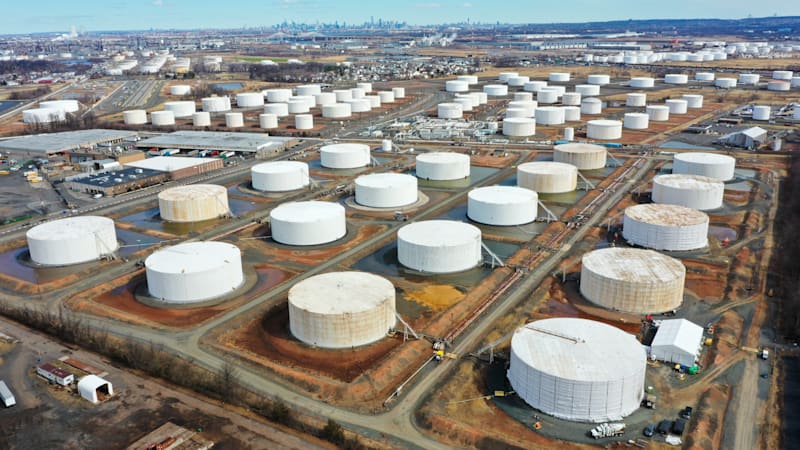Oil drops below $100 a barrel; could gas prices fall soon?

The heat is coming out of the oil market, and fast.
Brent futures fell below $100 a barrel on Tuesday, slumping by more than $9 since the previous close. West Texas Intermediate dropped below $95, having shed more than 20% in a tumultuous past week of trading that’s seen wild price fluctuations.
At its peak, Brent crude hit $123 a barrel.
Gasoline prices at the pump tend to lag behind oil futures by several weeks, but the drop offers hope to consumers who are paying record prices. AAA reports that the national average for regular gas was $4.31 as of Tuesday, which is down from $4.33 on Friday.
“It bears reminding that the cost of oil accounts for about 50% of what drivers pay at the pump,” said Andrew Gross, AAA spokesperson. “This war is roiling an already tight global oil market and making it hard to determine if we are near a peak for pump prices, or if they keep grinding higher. It all depends on the direction of oil prices.”
The latest development to rattle the market was a comment from Russian Foreign Minister Sergei Lavrov that the U.S. that sanctions on his country won’t affect the Iranian nuclear deal, sparking renewed optimism that the agreement could be revived. A resurgence of Covid-19 cases in China, the world’s biggest crude importer, and ongoing developments in Ukraine have also both roiled prices in recent days.
While there are still concerns that the disruption to Russian oil flows is squeezing an already tight market, OPEC and others have been quick to point out there is no shortage.
The market is also in the midst of a liquidity crunch, leaving prices vulnerable to big swings. Clearing houses have been increasing margins — effectively making it more expensive to trade the same amount of oil — and open interest has collapsed to the lowest since 2015. The gap between bids and offers for West Texas Intermediate was six cents at times on Tuesday — it would usually only be about half that amount — another sign of a less active market.
China’s latest virus outbreak, with growing clusters spawned by the highly infectious omicron variant in some of its most-developed cities and economic zones, is an unprecedented challenge for the country’s Covid Zero strategy. The nation injected more funds into the financial system and set a weaker-than-expected reference rate for the yuan, seeking to support the economy.
“Risk premium seems to evaporate swiftly from oil prices,” said Norbert Ruecker, an analyst at Julius Baer. “The pandemic and health restrictions weigh on China’s economic outlook and thus oil demand.”
While buyers continue to shun Russian crude, there are signs that exports might not be completely cut off as some deals retreat from the public eye. Surgutneftegas PJSC is offering financing flexibility to some customers in order to keep crude flowing, while India is working out a mechanism to facilitate trade using local currencies. Still, the value of Russia’s Urals crude keeps moving lower.
Poland’s prime minister and his Czech and Slovenian counterparts are making an unexpected trip to Kyiv by train Tuesday to meet with Ukrainian President Volodymyr Zelenskiy and plan to announce a “broad package” of support measures.
The U.S. and China also had a “substantial discussion” in their first high-level meeting on the war. The Federal Reserve, meanwhile, is expected to start tightening monetary policy this week, which is weighing on markets in general.
Russia’s invasion of Ukraine has rippled through markets, fanning inflation as governments try to encourage growth after the pandemic. U.K. lawmakers were told by consultant Energy Aspects Ltd. that Britain may have to ration products like natural gas and diesel if the war continues. Consumers are already feeling the pain at the pump, with prices of transport fuels rising across the globe.





